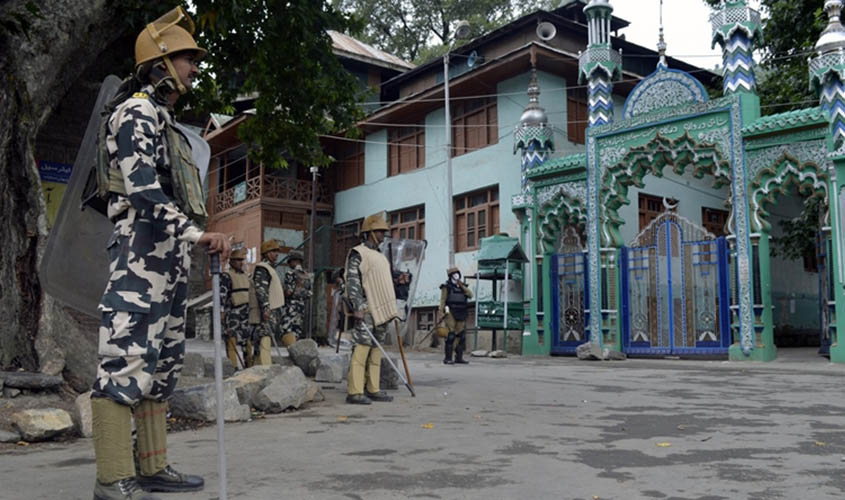The central dogma in molecular biology states that “Once information has passed from nucleic acid to proteins it cannot get out again.” This is inexplicably true of the Kashmir juggernaut as well. The heterogeneity of opinions and ideologies, the immutability of perceptions, the manifestations of the age-old dichotomy and the predictability of political chaos underpin the stalemate in the valley of Kashmir.
The last few decades have been a period of great technological advancements and human endeavour. It has changed the way people interact with each other socially, distances have narrowed and a world of opportunities has opened up for communities around the world. The humankind has never been as upwardly mobile as it is in today’s era. The quality of life has improved considerably and the access to information is abundant and literally available at the click of a button. This has also meant great pressures on how societies and individuals deal with changing social norms. There are more pressures now than ever before on individuals and communities to outshine each other, to remain relevant and to continue to transform themselves in the ever-changing world.
Kashmir meanwhile has remained somewhat obscure to this millennial transformation. The people of Kashmir and its polity remain tied up in the century old cliché of a territorial logjam, turned murkier by the religious bigotry of its ilk. There is a perpetually deferred nostalgia of holding on to the status-quo and intertwined realms of the real and the rhetoric. The morbid reality of the conflict, combined with the senseless loss of human lives and uprooting of communities, has created a turmoil of epic sufferings. Lives are lost every day on all sides of the spectrum and the ever burdening cost of human lives constricts every sane conscience left in the imbroglio. The two prominent communities inhabiting the valley for centuries have undergone a mitosis of emotions and action. The age-old love-hate relationship between the two communities that endeared the test of time suddenly plummeted to its nadir in the early 1990s, with the simmering molten lava effusing out in the form of rapes, kidnappings, daylight murders and terrorising and hounding out of the minorities that stood dispersed in myriad villages across the vale. Not everyone was part of this bloodshed, some were sorry witnesses, some looked the other way and others co-opted in the murderous mayhem.
On the other hand, the majority community has had to reconcile with the enormous loss of life and limb as a result of the armed conflict between the foreign trained terrorists braving the idea of separatism and the government forces ordained to protect the integrity and honour of the land and its people. There are no clear winners in this debilitating conflict. It is a zero-sum game of wearing each other out with the overwhelming side-effects of a generation of Kashmiris lost in oblivion.
Years have passed by and a generation of Kashmiris born in the conflict-ridden region have also lost all connect to the intricacies of a multicultural past of the valley. For those born and brought up in the last 30 years, Kashmir remains a zone in defiance with its own past and rich history. It now is a melting pot of non-conjugal resistance with the idea of India, a notional flight of fancy of an independent Kashmir and a fanciful love-affair with the military led Islamic Pakistan.
The syncretic culture that generation of Kashmiris took great pride in inhabiting a cultural space between Vedic Hinduism and Sufi Islam, a deep reverence for each other’s shrines and the relics housed in those shrines, the Vakh’s of Lalla-ded, a figure revered by both the Pandits and Muslims of Kashmir, Nund-Rishi also known as Sheikh Noor-ud-Din Wali’s unqualified veneration for the saint-poetess Lalla that had a great impact on devout Kashmiri Muslims, all were lost to the rising intolerance and consequently a society deeply divided on religious fault-lines.
The nine inches (Vitasti) of fountain-head created by Lord Shiva at Verinag to allow river Vitasta to flow through the expanse of the valley to consecrate its land from the Pisachas living there has yet again had to shoulder the burden of bloodshed, killing and maiming of its people thousands of years after the great Alexander crossed the Vitasta (Jhelum) in 326 BC at the battle of Hydesper river and defeated the mighty Indian king Porus.
The uncharted distance between the wishes of its people and the reality of today is the biggest challenge and the central dogma of Kashmir. The arduous path to resolution does not lie in the barter of land or its people, but probably lies somewhere in rehashing the foundations of Kashmiriyat, the coming together of two ends of the spectrum by recreating the diverse splash of rainbow colours of its past and allowing its people to immerse themselves in its chasm and consecrate their ideologies. This new beginning has the potential to wash away the sins of its people’s Karma and the innate ability to chart a course that can flow in counter currents and thus allow the amino-acids of love dignity and respect to flow upwards towards its nucleic acids and help recreate a valley of our dreams.
Vinod Tikoo, co-founder of KPCS UK (Kashmir Pandits Cultural Society UK), is a London based freelance writer/community activist working towards advocacy and creating awareness among the diaspora on Kashmir.

